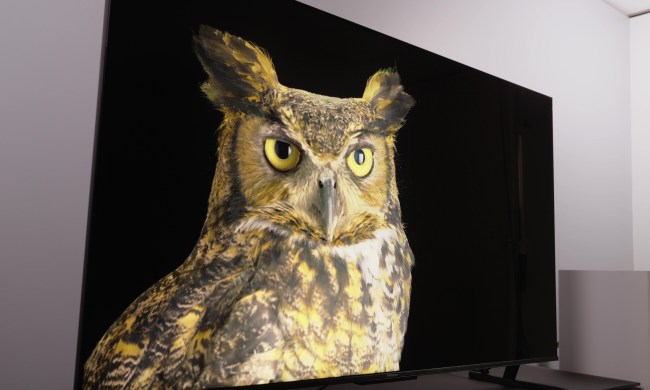Today, in a hilarious prerecorded video hosted by Community’s Joel McHale, Hisense launched its 2021 smart TV lineup, which includes the company’s first 8K Roku TV and the first TV in the U.S. to offer Dual-Cell technology. What will these TVs cost, when can you buy them, and exactly which features can you expect? We’ve got all of the details.
U9DG Series: 4K ULED XD TV with Dual-Cell Technology
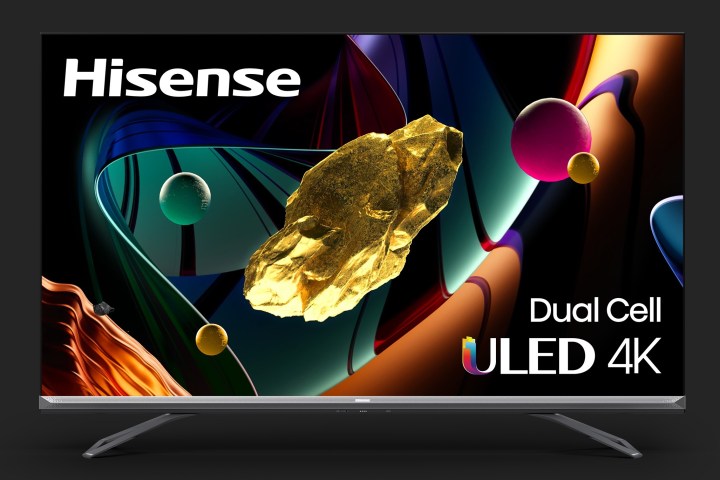
You’re probably familiar with terms like quantum dots, HDR, and 4K resolution, but Hisense’s new U9DG Series brings a new buzzword: Dual-Cell technology.
What is it? In short, it’s a second “luminance control” LCD panel that sits between the TV’s LED backlight and the main LCD panel. This sandwiched panel produces the same image as the main panel, but only works in black and white. It’s a clever way of getting around the tricky business of making LED backlights smaller and smaller in order to increase the number of dimmable backlight zones.
Each pixel in the black-and-white LCD panel effectively becomes its own backlight control zone — there are 2 million of them — which lets Hisense significantly increase its control over image brightness and contrast. One of the big benefits of this system is that it effectively eliminates blooming — the halo of light that can sometimes appear in dark areas of the screen that sit adjacent to bright areas. The TV’s light passes through these two layers, thus the “dual-cell” name.
Despite the fact that the light has to pass though two layers, Hisense still claims 1,000 nit peak brightness, which should yield very good HDR performance.
Beyond the new dual-cell tech, the U9DG also sports a huge array of other features like:
- HDMI 2.1
- Quantum dot color
- Dolby Vision IQ
- HDR10+/HDR10/HLG
- IMAX enhanced
- Variable Refresh Rate (VRR) and FreeSync Premium
- 120Hz native refresh rate
- Filmmaker Mode
- Dolby Atmos
- eARC
- WiSA-Ready
- Android TV with hands-free Google Assistant
- Chromecast
The U9DG will only come in a 75-inch screen size and will sell for $3,500 when it’s released in summer 2021.
U800GR Series: 8K Roku TV
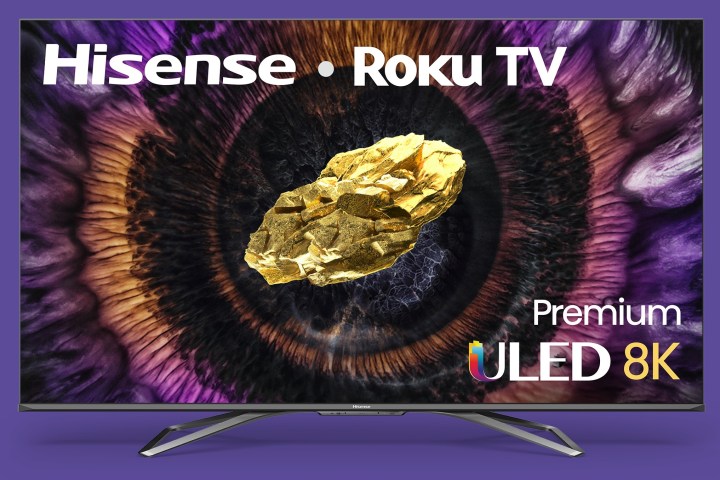
With the U800GR, Hisense officially joins the 8K race and does so in style with a Roku TV. The U800GR has 4x the resolution of 4K TVs, or 33 million pixels for those who like really, really big numbers.
To get a crisp 8K image, Hisense uses an 8K Upscaler, which analyzes HD and 4K pictures frame-by-frame and automatically adjusts for the 8K display.
This model sports a native 120Hz panel, up to 180 local dimming zones, and up to 1,000-nit peak brightness.
As a Roku TV, it has all of the features that make Roku such a strong smart TV streaming platform, such as:
- A customizable home screen
- Access to over 250,000 free movies and TV episodes
- Search across channels with returned results in order by price
- AirPlay 2
- Roku voice remote
- Alexa and Google Assistant compatibility
- Apple Siri and HomeKit
- Private Listening
Other feature include HDMI 2.1, Quantum dot color, Dolby Vision, Dolby Atmos, and 480 Motion Rate.
The U800GR will only come in a 75-inch screen size and will sell for $3,200 when it’s released in summer 2021.
U8G Series: 1,500-nit peak brightness
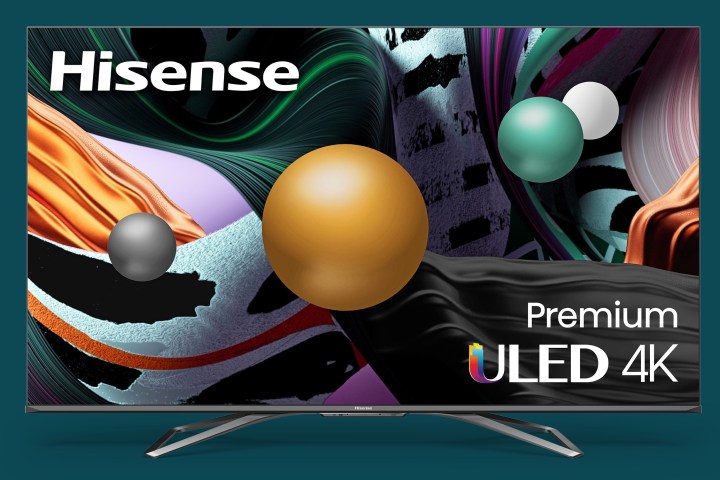
In 2020, Hisense blew us away with its H9G, a 4K TV with truly impressive 1,000-nit peak brightness. For 2021, that bright torch gets handed to the U8G, which Hisense claims can muster even more brightness: 1,500 nits!
That kind of achingly bright performance sets up the U8G to be an ideal choice for rooms with big windows and lots of natural light. When you combine the U8G’s brightness and its anti-glare, anti-reflection screen, it should look stellar no matter how much ambient light it has to contend with.
As with the U9DG and U800GR, the U8G is loaded with leading-edge features, including:
- Quantum Dot color
- Dolby Vision IQ
- HDMI 2.1
- 10,000:1 contrast ratio
- Up to 360 full-array local dimming (FALD) zones
- IMAX-enhanced
- Filmmaker Mode
- VRR and FreeSync Premium
- HDR10+/HDR10
- Dolby Atmos,
- eARC
- WiSA Ready
- 120Hz native display
- Android TV with hands-free Google Assistant
The U8G will be available in May, with two screen size options:
Read our Hisense U8G in-depth review
U7G Series

Hisense is positioning the new U7G Series (formerly the H8 Series) as its leading choice for gamers. In truth, the U9DG, U800GR, and U8G will also be excellent for gaming, but the U7G is Hisense’s most affordable way to access the most gamer-friendly features.
The key to the U7G’s gaming chops is its support for HDMI 2.1. This brings variable refresh rate (VRR), auto low-latency mode (ALLM), and 4K at 120Hz for super-smooth visuals. Hisense also bundles in FreeSync Premium VRR, which makes the U7G a great companion for PC and console games that use this feature.
There’s also a new Game Mode Pro, which Hisense says can recognize gaming sequences and automatically optimize display settings.
You also get:
- Quantum dot color
- Up to 120 FALD zones
- 1,000-nit peak brightness
- IMAX-enhanced
- Filmmaker Mode
- Dolby Vision IQ
- HDR10+/HDR10/HLG
- Dolby Atmos
- eARC
- WiSA Ready
- Android TV with hands-free Google Assistant
- Chromecast
The U7G Series will be available in summer 2021 in three sizes:
- 55-inch, $750
- 65-inch, $950
- 75-inch, $1,400
U6G Series
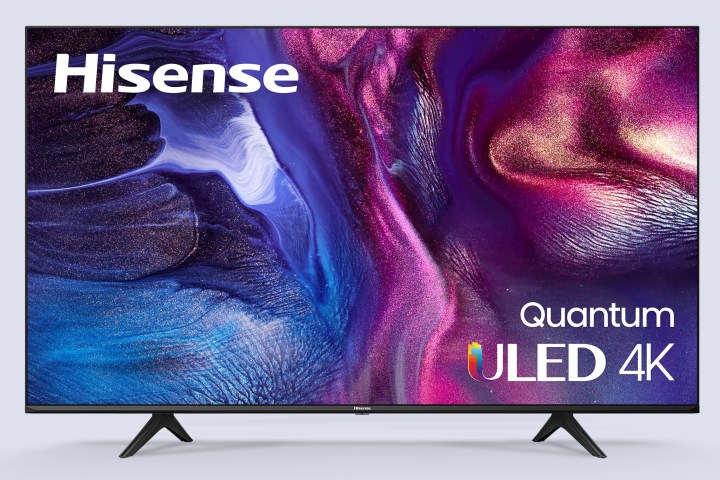
Hisense’s ULED technology, which combines hardware and software to produce a high level of overall performance, is now available at a more affordable price with the U6G Series.
While not quite as bright as the other 2021 models (600-nit peak brightness), the U6G is nonetheless packed with an impressive number of high-end features:
- Quantum dot color
- Dolby Vision
- HDR10, HDR10+, and HLG
- 60Hz refresh rate
- Up to 60 FALD zones
- 600-nit peak brightness
- Dolby Atmos
- Filmmaker Mode
- Auto low-latency mode (ALLM)
- Android TV
- Google Assistant
- Chromecast
You can buy the U6G Series now, in four sizes:

